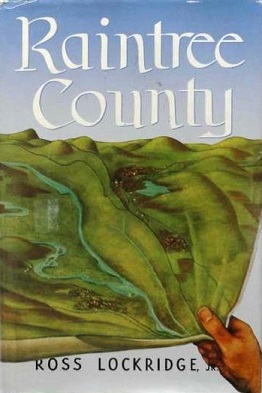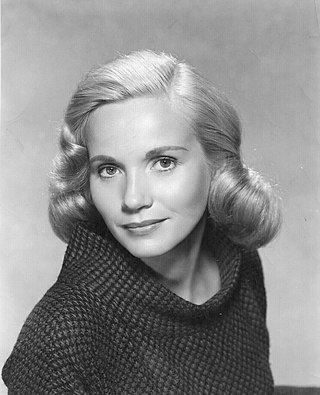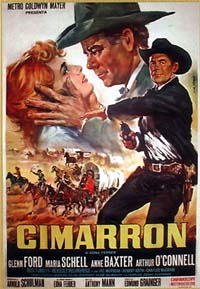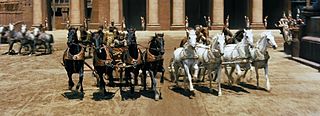
Dame Elizabeth Rosemond Taylor was a British and American actress. She began her career as a child actress in the early 1940s and was one of the most popular stars of classical Hollywood cinema in the 1950s. She then became the world's highest paid movie star in the 1960s, remaining a well-known public figure for the rest of her life. In 1999, the American Film Institute named her the seventh-greatest female screen legend of Classic Hollywood cinema.

Jackson DeForest Kelley, known to colleagues as "Dee", was an American actor, screenwriter, poet, and singer. He was known for his roles in Westerns and as Dr. Leonard "Bones" McCoy of the USS Enterprise in the television and film series Star Trek (1966–1991).

Edward Montgomery Clift was an American actor. A four-time Academy Award nominee, he was known for his portrayal of "moody, sensitive young men", according to The New York Times.

Raintree County is a novel by Ross Lockridge Jr. published in 1948. It tells the story of a small-town Midwestern teacher and poet named John Shawnessy, who, in his younger days before his service as a Union soldier in the Civil War, met and married a beautiful Southern belle; however, her emotional instability leads to the destruction of their marriage.

Eva Marie Saint is an American retired actress of film, theatre, radio and television. In a career spanning 75 years, she has won an Academy Award and a Primetime Emmy Award, alongside nominations for a Golden Globe Award and two British Academy Film Awards. Saint is both the oldest living and earliest surviving Academy Award-winner, and one of the last surviving stars from the Golden Age of Hollywood cinema.

Edward Dmytryk was a Canadian-born American film director and editor. He was known for his 1940s noir films and received an Oscar nomination for Best Director for Crossfire (1947). In 1947, he was named as one of the Hollywood Ten, a group of blacklisted film industry professionals who refused to testify to the House Un-American Activities Committee (HUAC) in their investigations during the McCarthy-era Red Scare. They all served time in prison for contempt of Congress. In 1951, however, Dmytryk testified to the HUAC and named individuals, including Arnold Manoff, whose careers were then destroyed for many years, to rehabilitate his own career. First hired again by independent producer Stanley Kramer in 1952, Dmytryk is likely best known for directing The Caine Mutiny (1954), a critical and commercial success. The second-highest-grossing film of the year, it was nominated for Best Picture and several other awards at the 1955 Oscars. Dmytryk was nominated for a Directors Guild Award for Outstanding Directorial Achievement in Motion Pictures.

Ben-Hur is a 1959 American religious epic film directed by William Wyler, produced by Sam Zimbalist, and starring Charlton Heston as the title character. A remake of the 1925 silent film with a similar title, it was adapted from Lew Wallace's 1880 novel Ben-Hur: A Tale of the Christ. The screenplay is credited to Karl Tunberg, but includes contributions from Maxwell Anderson, S. N. Behrman, Gore Vidal, and Christopher Fry. The cast also features Stephen Boyd, Jack Hawkins, Haya Harareet, Hugh Griffith, Martha Scott, Cathy O'Donnell and Sam Jaffe.

Tom Drake was an American actor. Drake made films starting in 1940 and continuing until the mid-1970s, and also made TV acting appearances.
Ross Franklin Lockridge Jr. was an American writer known for his novel Raintree County (1948). The novel became a bestseller and has been praised by readers and critics alike. Some have considered it a "Great American Novel". Lockridge committed suicide at the peak of his novel's success at age 33. </ref> http://www.raintreecounty.com/bioenig.html

Panavision is an American motion picture equipment company founded in 1954 specializing in cameras and lenses, based in Woodland Hills, California. Formed by Robert Gottschalk as a small partnership to create anamorphic projection lenses during the widescreen boom in the 1950s, Panavision expanded its product lines to meet the demands of modern filmmakers. The company introduced its first products in 1954. Originally a provider of CinemaScope accessories, the company's line of anamorphic widescreen lenses soon became the industry leader. In 1972, Panavision helped revolutionize filmmaking with the lightweight Panaflex 35 mm movie camera. The company has introduced other cameras such as the Millennium XL (1999) and the digital video Genesis (2004).

Cimarron is a 1960 American epic Western film based on the Edna Ferber novel Cimarron. The film stars Glenn Ford and Maria Schell and was directed by Anthony Mann and Charles Walters, though Walters is not credited onscreen. Ferber's novel was previously adapted as a film in 1931; that version won three Academy Awards.

The Last Hunt is a 1956 American western film directed by Richard Brooks and starring Robert Taylor and Stewart Granger, with Lloyd Nolan, Debra Paget and Russ Tamblyn. It was produced by Dore Schary at Metro-Goldwyn-Mayer. The screenplay was by Richard Brooks from the novel The Last Hunt, by Milton Lott. The music score was by Daniele Amfitheatrof and the cinematography by Russell Harlan.

The Young Lions is a 1958 American epic World War II drama film directed by Edward Dmytryk and starring Marlon Brando, Montgomery Clift, and Dean Martin. It was made in black-and-white and CinemaScope and was theatrically released by 20th Century-Fox. The film is based on the 1948 novel of the same name by Irwin Shaw.
John Paxton was an American screenwriter.

Ultra Panavision 70 and MGM Camera 65 were, from 1957 to 1966, the marketing brands that identified motion pictures photographed with Panavision's anamorphic movie camera lenses on 65 mm film. Ultra Panavision 70 and MGM Camera 65 were shot at 24 frames per second (fps) using anamorphic camera lenses. Ultra Panavision 70 and MGM Camera 65's anamorphic lenses compressed the image 1.25 times, yielding an extremely wide aspect ratio of 2.76:1.
Raintree County may refer to:

Drango is a 1957 American Western film produced by Jeff Chandler's production company Earlmar Productions, written and directed by Hall Bartlett, and released by United Artists. Starring Chandler in the title role, the film also features Ronald Howard, Joanne Dru, Julie London and Donald Crisp. Set in the town of Kennesaw, Georgia in the months immediately following the American Civil War, the story depicts the efforts of a resolute Union Army officer who had participated in the town's destruction during Sherman's March determined to make amends.

Bennie Jean Porter was an American film and television actress. She was notable for her roles in The Youngest Profession (1943), Bathing Beauty (1944), Abbott and Costello in Hollywood (1945), Till the End of Time (1946), Cry Danger (1951), and The Left Hand of God (1955).

Benjamin Thau was an American businessman who became vice-president of the Hollywood film studio Metro-Goldwyn-Mayer (MGM), a subsidiary of the Loew's theater chain. From 1928 he was in charge of casting, in the business of discovering and developing talented performers. He was known for his quiet and calming influence with often temperamental stars. Towards the end of his career he was head of the studio from 1956 to 1958.

Jarma Toy Lewis was an American film actress and model active in the 1950s.

















